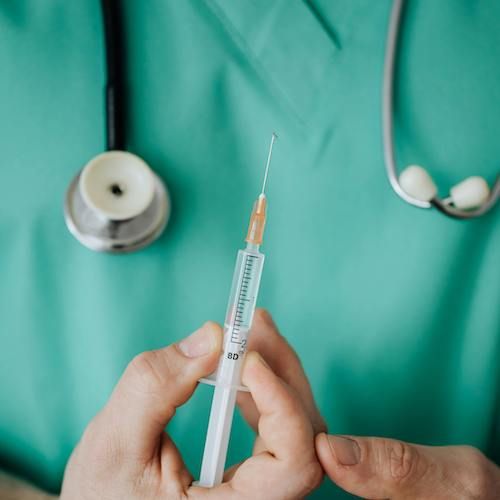News
Article
Rituximab, Omalizumab Combination Therapy Well-Tolerated for Bullous Pemphigoid Patients
Author(s):
This data may bring patients with the rare immunobullous disease closer to an eventual FDA-approved treatment.

Rituximab (RTX) and omalizumab (OMZ) combination treatment may be well-tolerated and effectively improve health outcomes for individuals with bullous pemphigoid (BP) that did not respond well to rituximab exclusively, according to new findings.1
These findings resulted from a recent analysis conducted to expand upon research into potential therapies for this rare immunobullous disease, especially given the current lack of a US Food and Drug Administration (FDA)-approved treatment for the condition.
The research letter’s authors indicated that RTX has had varied outcomes for BP and OMZ, though it acts more rapidly and targets IgE, is also inconsistent in its effectiveness.2,3 This new research into combination therapy was led by Stephanie T. Le, MD, from the Department of Dermatology at the University of California, Davis.
“This study reports a case series of 10 patients with BP who achieved a 70% durable complete response rate after receiving RTX combined with OMZ (RTX+OMZ),” Le and colleagues wrote.
Background and Findings
The investigators implemented a retrospective analysis of BP patients’ electronic medical records, with data specifically being drawn from the Department of Dermatology at University of California, Davis, over the period from 2015 - 2022. Their criteria for inclusion in the research included being aged 18 years or older and having a confirmed diagnosis of BP, undergoing concurrent treatment of RTX and OMZ.
The research team looked at the intravenous administration of RTX, with the dosage having been 1000 mg on days 0 and then 15. They identified 2 groups using subcutaneous OMZ administration.
Specifically, the investigators found that a high dose arm was given 300 mg regularly every 2 weeks, and an alternative low dose arm was given 300 mg regularly every 4 weeks or 150 mg every 2 weeks. The team identified therapeutic endpoints in accordance with the necessary consensus criteria.
The research team ended up including 10 subjects with a bullous phenotype and severe disease in their research, with median age at the time of presentation being 62 years (IQR: 64-76). They noted that 7 were female, 1 was a Pacific Islander, 2 were Asian, and 7 were non-Hispanic White patients.
Among these individuals, the team reported that 7 subjects were in the high-dose arm and given RTX+OMZ, while 3 subjects were given low-dose RTX+OMZ. The choice of low dose had been based upon insurance limits or on preferences of those treated.
The investigators found that the high dose arm given OMZ reported a 100% complete remission following an average duration of 2.1 months. In contrast, all of those in the low dose OMZ arm of the study showed improvement, but none were able to reach a complete remission over a mean observation period of 13 months.
The team did add that, despite the variations in regimen, all subjects were rated as having very much improved at the 3-month mark. They found that in the higher dose OMZ arm, 4 out of 7 individuals who tapered off their OMZ dosage or frequency reported having flare-ups within 1 - 3 months, adding that this was resolved following a restart of OMZ.
Among those who reported a complete remission, 4 out of 7 subjects were noted by the investigators as having required RTX redosing following month 6, within a range of about 6-16 months. They also noted that RTX alone was shown to be insufficient for remission, as evidenced by several subjects who needed the addition of high dose OMZ.
They added that mild adverse effects were found to have been reported in all cases.
“The study findings highlight that RTX+OMZ is well tolerated, may improve outcomes in patients with refractory BP who are unresponsive to RTX monotherapy, and may accelerate time to remission,” they wrote. “Larger controlled studies of RTX+OMZ compared with other therapies for treatment of refractory BP8 (eg, dupilumab) are needed.”
References
- Le ST, Herbert S, Haughton R, et al. Rituximab and Omalizumab Combination Therapy for Bullous Pemphigoid. JAMA Dermatol. Published online November 22, 2023. doi:10.1001/jamadermatol.2023.4508.
- Wallace ZS, Mattoo H, Mahajan VS, et al. Predictors of disease relapse in IgG4-related disease following rituximab. Rheumatology (Oxford). 2016;55(6):1000-1008. doi:10.1093/rheumatology/kev438.
- Cao P, Xu W, Zhang L. Rituximab, omalizumab, and dupilumab treatment outcomes in bullous pemphigoid: a systematic review. Front Immunol. 2022;13:928621. doi:10.3389/fimmu.2022.928621.





